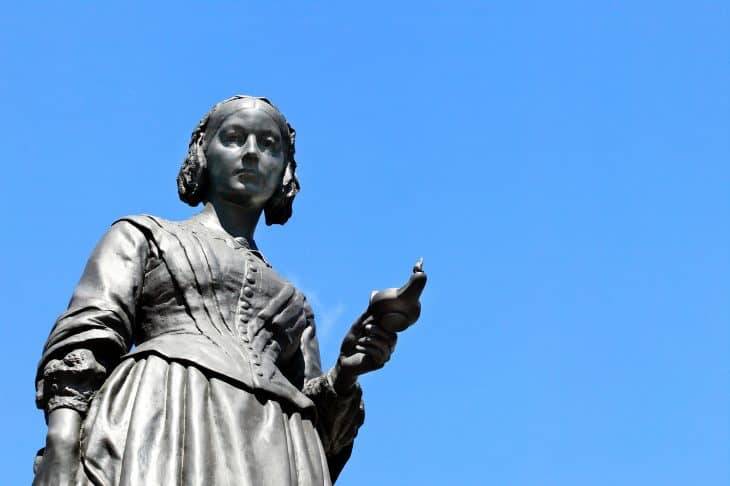
Before Florence Nightingale’s time, nurses actually had a bad reputation. So bad that authors like Charles Dickens even played up their stereotypes in his novels. Florence changed all that, laying the honorable foundation for the medical professionals we know as nurses today. To support this theory, get ready for a rundown of Florence Nightingale facts.
First off, Florence was a social reformer, statistician, and pioneer of modern nursing in England. During the Crimean War, Florence rose to prominence as a nurse manager and trainer, organizing treatment for wounded soldiers in Constantinople. She particularly became known for being the first to use graphs and charts in the nursing field. In fact, she used it in her presentations before the British Parliament. The pie allowed her to interpret data in a way that would be easy for her audience to understand.
After the war, she founded her own nursing school in London. She also wrote a book, Notes On Nursing, about the many topics and issues nurses could and are facing in their careers. The book is currently part of the reading list of many nursing schools and can be bought at major bookstores.
Having always had a soft spot for animals, Florence found an owl during a trip to Europe and kept it as a companion. She named the owl Athena. It would rest inside a pocket in her dress while she would go about her work. Athena stayed with Florence for the rest of Florence’s life.
Florence Nightingale was more than just the “Lady with the Lamp”; she was a Victorian visionary who saved the lives of countless people. To know more about this truly amazing woman, check out our collection of 50 Florence Nightingale facts.
- Florence Nightingale knew languages beyond her native English such as French, German, Greek, Italian, and even Latin.
- She started her famed involvement in the Crimean War with only 38 volunteers.
- Before Nightingale’s involvement, 43% of patients in field hospitals die.
- After her involvement, that number dropped to only 2% in four months.
- Nightingale received many marriage proposals during her life but turned them all down.
- Florence Nightingale came from a British family, but her mother gave birth to her in Florence, Italy.
- Her father William Nightingale gave her advanced education which included studies on classical literature and philosophy.
- She met the Parisian hostess Mary Clarke during her family’s European tour in 1838.
- Mary Clarke gave Florence Nightingale the belief that women could stand equal to men.
- Nightingale began her studies in nursing in 1844.
- She faced opposition from both her family and society itself against her chosen career.
- She later served famously as a nurse in the Crimean War.
- After the war, she established her own nursing school in London.
- Nightingale later became the first recipient of the Royal Red Cross in 1883.
- She died peacefully in her sleep on August 13, 1910, aged 90.
- Florence Nightingale was nicknamed the Lady With The Lamp.
- She got the moniker from her habit of checking on her patients at night while carrying a lamp.
- She became friends with Queen Victoria of Britain after the Crimean War.
- Her friendship with the queen increased her reputation as a leading icon of Victorian Britain.
- The annual International Nurses Day falls on Nightingale’s birthday, May 12.
Florence Nightingale’s mentor Mary Clarke had quite the reputation.
Florence Nightingale didn’t respect upper-class British women in general and even described them as inconsequential. She also preferred the company of male intellectuals over other women, something considered scandalous by society at the time.
Clarke didn’t care for that, though, as she didn’t put too much importance on her public appearance. Despite all that, her peers respected her independent character, and even described her as someone who simply could not bore anyone.
Nightingale had a good friend and ally in Sidney Herbert.
They first met in Rome in 1847, while Nightingale toured Europe on her own. They quickly became friends, and their friendship would endure throughout their whole lives. Herbert later became Britain’s Secretary of War during the Crimean War, and through their friendship, Nightingale received permission to operate field hospitals in that war.
After the war, she became one of his most trusted advisors but was accused of pressuring him too much. So much so, critics wonder if her involvement in Sidney’s career could have contributed to his death in 1861.
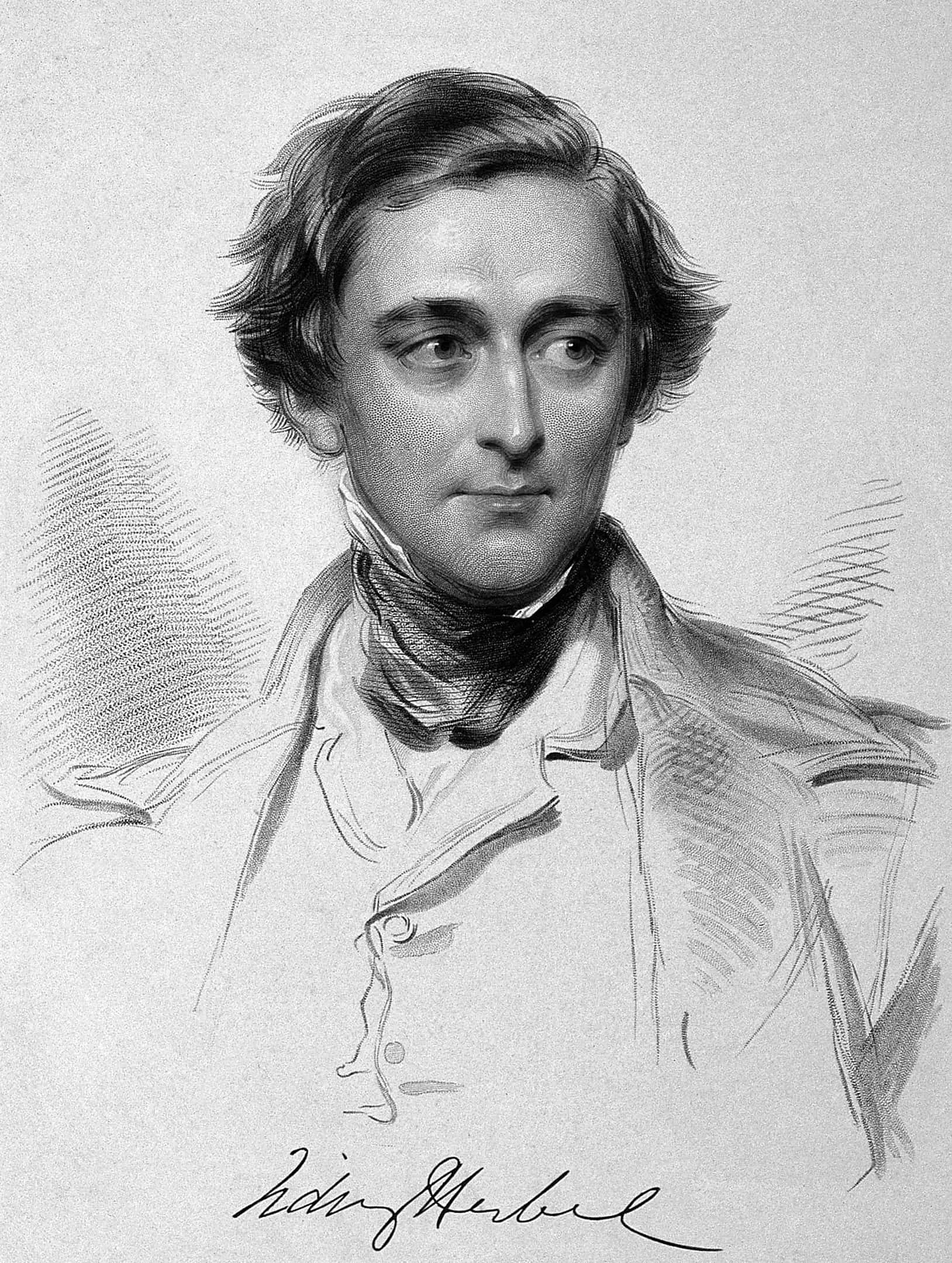
Nightingale once had a pet owl.
Nightingale found the owl during her own European trip, this time in Greece. Nightingale rescued the owl from children the children that were torturing it and gave it the name Athena. Athena stayed with Nightingale for the rest of its life, traveling with her to Egypt and then back to Britain.
In fact, most of the time, Athena would go around with Nightingale resting inside a pocket in her dress. Sadly, Athena died shortly before Nightingale left to join the Crimean War.
She described herself as having received several calls from God during her life.
In her diaries, Nightingale described her first call from God in 1837, which led to her decision to become a nurse. Her next call came in 1850 while traveling to Egypt after her European tour, specifically the ruined ancient city of Thebes.
She described the second call as God asking her what she could do for Him without asking for anything in return. Later that year, she visited a Protestant community in Germany, where she received another call from God. She spent four months at Kaiserswerth-am-Rhein, where she learned many lessons she would later use in her medical career.
She started her medical career in 1853.
Nightingale started her long and rich life in medicine in London, where she became a superintendent at the Institute for the Care of Sick Gentlewomen. Located at Upper Harley Street, the institute continues to operate today, but with a different name: Nightingale Hospital.
Nightingale served as superintendent until she departed for the Crimean War. During her time at the institute, she made several changes. For one thing, she oversaw the installation of hot water facilities on all floors, as well as a windlass. The latter allowed food to leave the kitchen quickly, and reach patients’ rooms and beds still hot.
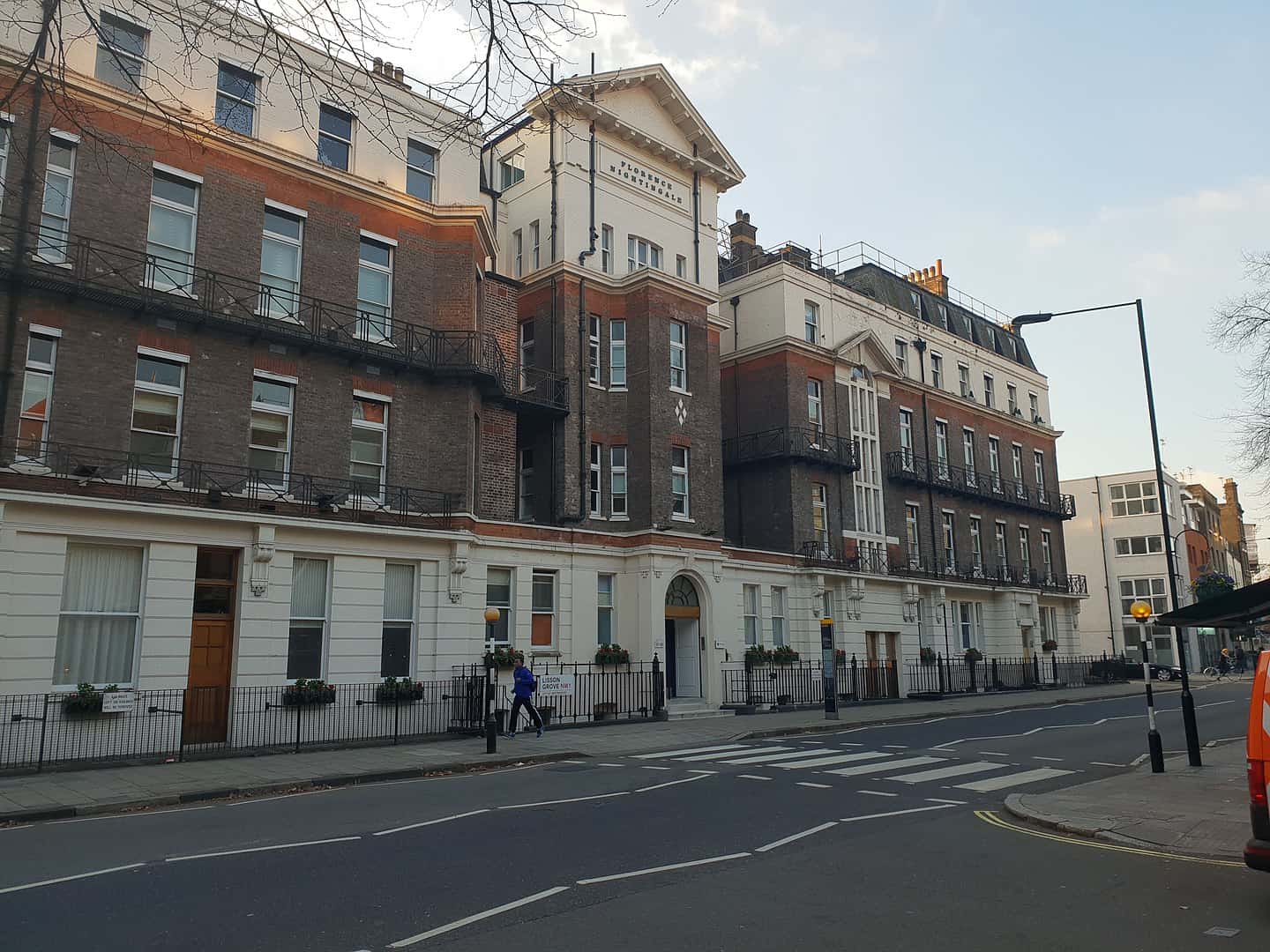
Nightingale quickly made an important observation upon arriving at a field hospital in the Crimean War.
Nightingale’s posting lay at a field hospital in Constantinople or known as Istanbul today. When she arrived, there were feces littering the hospital’s floors, rats openly wandering the halls, and beddings are rarely changed and cleaned. This quickly led her to realize that the lack of sanitation primarily caused the high casualty rate in the hospital.
Some of her solutions to the problem proved surprisingly simple, such as requiring the staff to wash their hands. Others needed support from her superiors, such as improved ventilation and plumbing, as well as proper equipment to prepare good food for the patients. Once the changes pushed through, the hospital’s casualty rate fell quickly.
Nightingale personally saw herself in a modest light.
Naturally, the British media presented Nightingale as a hero for her contributions to battlefield medicine. However, Nightingale never claimed any credit for her actions and how they helped wounded soldiers recover.
This led some modern scholars to question if Nightingale truly deserved her reputation. Most scholars, however, dismiss such questions, as all evidence points to Nightingale being absolutely deserving of all praise. She was merely being modest about her achievements.
Nightingale's fellow nurses had divided opinions about her.
Nightingale had a cold relationship with fellow nurse Mary Seacole, who ran a field hospital exclusively for officers. Seacole, who came from a British-Jamaican family, accused Nightingale and her staff of racism against her.
However, Nightingale’s writings revealed that her distance to Seacole came from Nightingale’s perception of Seacole’s apparent lack of professionalism. While Nightingale admitted that Seacole made her patients feel very welcome, she also gave them too many liberties. In particular, Nightingale observed that Seacole allowed her patients to drink alcohol, many becoming drunk while in her care.
She later pioneered what we know today as medical tourism.
This took place immediately after the Crimean War, with Nightingale praising the medicinal spas available in the Ottoman Empire. She backed them up with scientific observations of dietary information, health conditions, and patient care. She also noted how those spas also had much more affordable rates compared to similar spas in Switzerland.
After the war, she wrote a book called Notes on Nursing.
First published in 1859, the book Notes on Nursing held advice and guidelines from Nightingale on many topics nurses would find valuable for their careers. Topics include proper ventilation, adequate room temperature, and even household management.
Nightingale warned her readers not to treat the book as a strict guide to follow, but only as a source of potential help. The book later became part of the reading list at Nightingale School, as well as other nursing schools. It became republished many times over the century and remains publicly available today.
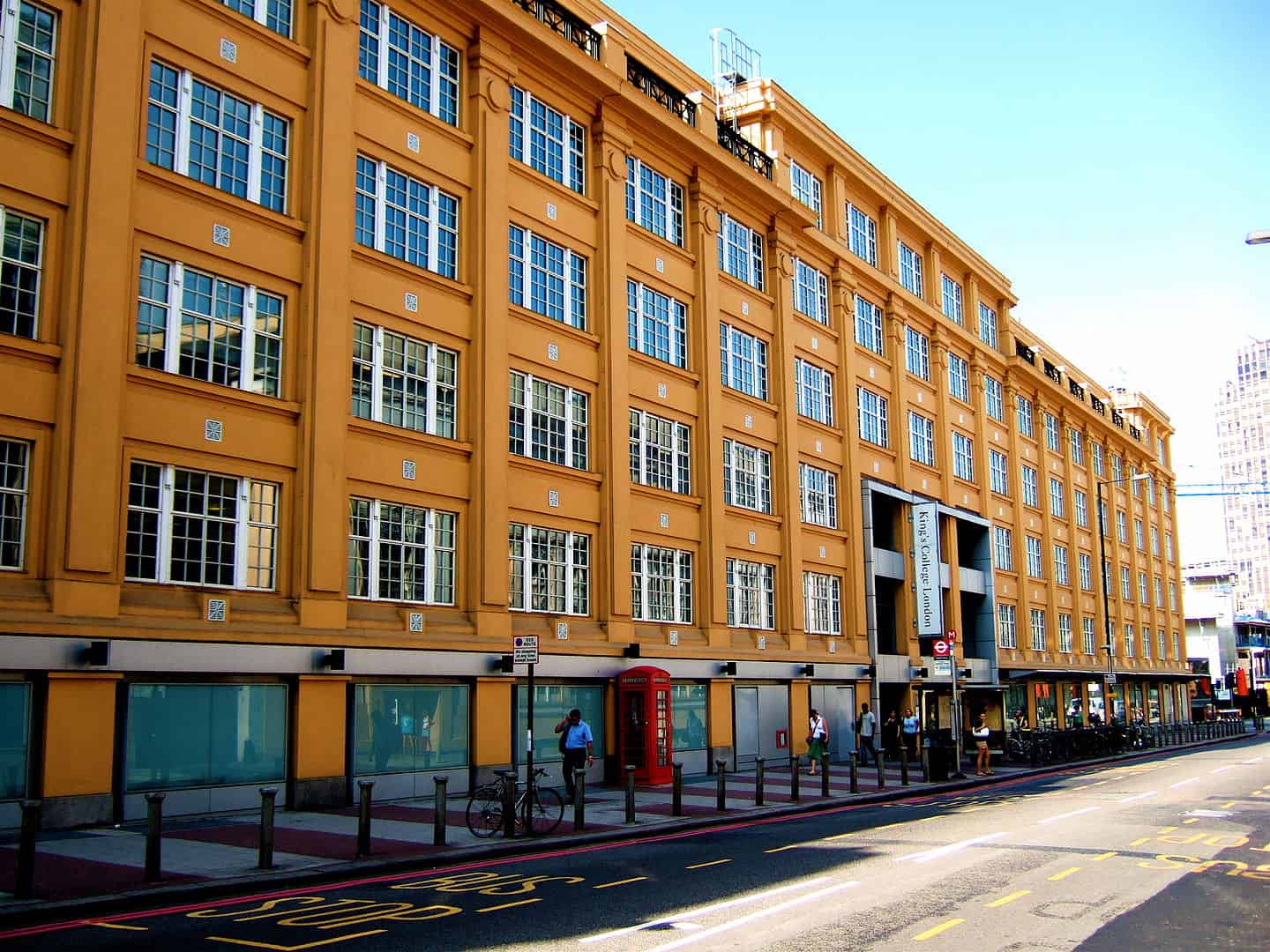
She continued to make waves on returning to Britain after the Crimean War.
She did so by collecting evidence for the Royal Commission regarding the health of their army. This not only ensured that her reforms on field hospitals in wartime become a standard practice but also as something to follow in peacetime. Her contributions helped improve health and living conditions for soldiers at home. Afterward, Nightingale focused her efforts on higher sanitary standards for both hospitals and urban homes.
Nightingale enjoyed an international reputation as early as the 1860s.
For one thing, she became an example to nurses in both the Union and Confederacy during the American Civil War. The Union even got in touch with her for her input in organizing and supporting their field hospitals. Later on, they formed the United States Sanitary Commission based on Nightingale’s proposals.
She became the mentor to another famous nursing pioneer, Linda Richards.
She also goes by the title of America’s first trained nurse, and in fact, studied under Nightingale in Europe. When Richards returned to America, she passed on Nightingale’s teachings and examples to other American nurses. Later on, Richards traveled to a modernized Japan during the late-19th Century where she passed on Nightingale’s legacy to the country’s nurses.
Some scholars argue she opposed germ theory at the time.
Most scholars, however, see this as a misconception from one of Nightingale’s known opinions. Specifically, Nightingale opposed the theory of contagionism, which argued that diseases could only spread by touch. In fact, in the 1880s, Nightingale’s books and other writings include strong support for germ theory. Nightingale even pushed for strict standards and proper methods aimed at killing germs to limit their spread.
Nightingale suffered from poor health towards the end of her life.
Scholars think that based on the described symptoms, Nightingale suffered from acute brucellosis. They think she developed brucellosis from drinking unsterilized milk, and that the symptoms appeared as early as 1857.
Scholars also think Nightingale’s brucellosis later developed into spondylitis or swelling of her backbones. In addition to brucellosis, Nightingale also suffered from periods of depression. Even then, Nightingale refused to back down and continued to work on hospital planning programs. Only growing blindness in her final years managed to slow her down, but she still kept herself up to date with current affairs in those years.
Nightingale also had a mixed position towards feminism.
Surprisingly, Nightingale held a low opinion of the 19th Century’s women’s rights activists. In particular, she criticized how those activists claimed that women had such few career choices available.
Nightingale saw this as ignorant and privileged, considering she knew firsthand how respectable nursing careers constantly went unappreciated and unfilled. Instead, Nightingale made friends and supported men in power, who she described as having done more for women than any women’s rights activists she knew. Nightingale also had a habit of describing herself in a masculine tense, even calling herself a man of action at one point.
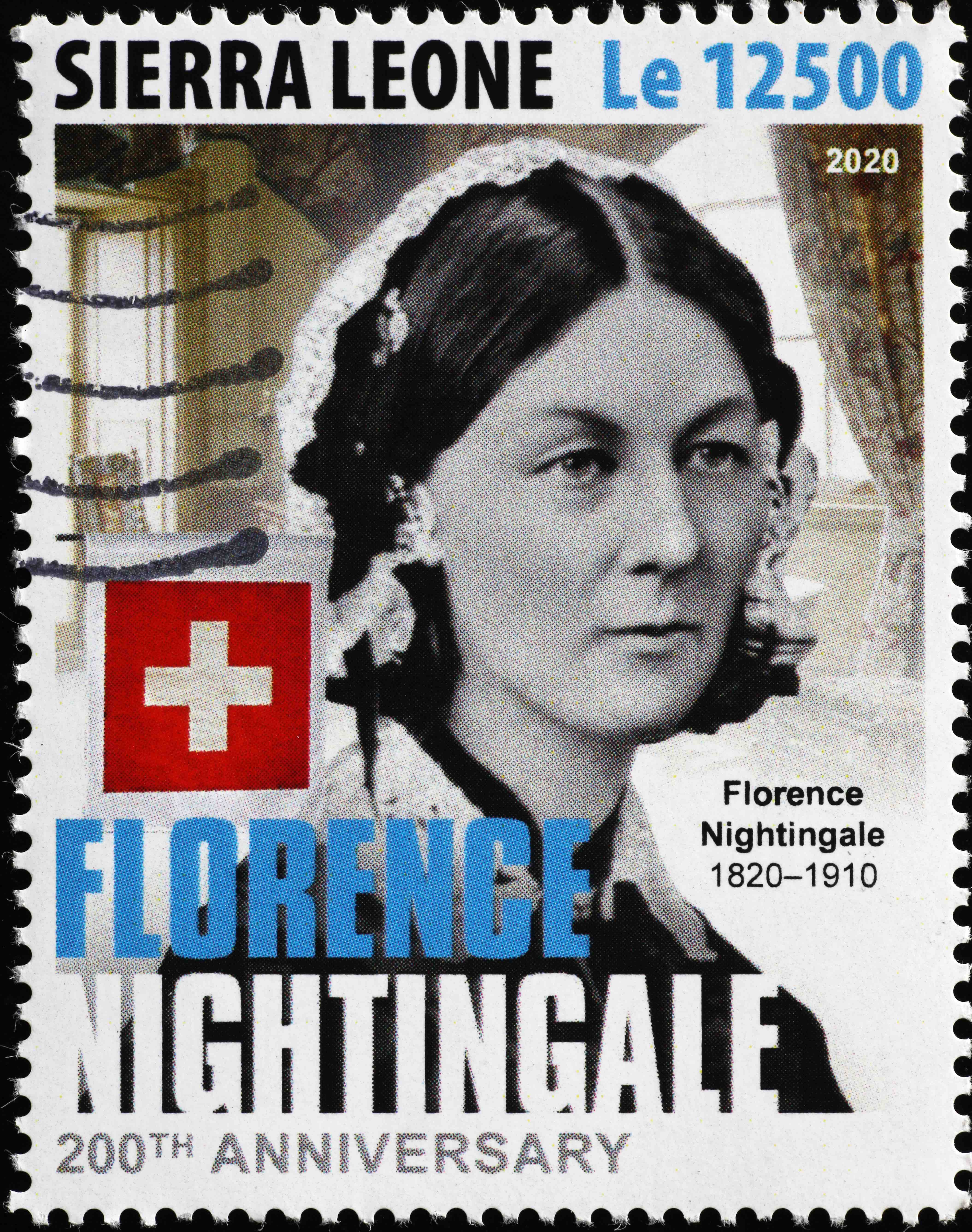
As a nurse, Nightingale used math to pioneer developments in the field of nursing.
She especially became famous for applying graphs and charts in the nursing field. In particular, she popularized the pie chart, first invented by William Playfair in 1801. At the time, people saw it only as a mathematical and academic curiosity.
Nightingale took the pie chart and turned it into a useful tool to present and apply statistical data. In fact, she later used it in her presentations before the British Parliament, allowing her to explain statistics in a way easier to understand. She even developed her own version of the pie chart, the Nightingale rose diagram or the polar area diagram. This later provided the basis for the development of the modern circular histogram.
She also pushed for improved sanitation in India.
Originally, Nightingale held the responsibility of improving the health of the British Army in India. In particular, the British Army in India suffered from high casualties even in peacetime. Nightingale discovered the same causes as those in Britain and in the Crimean War. She cited poor sanitation, bad hygiene, overcrowding, and a lack of proper ventilation as suspects that allowed the disease to fester.
She also concluded that improving the British Army’s conditions could only go hand-in-hand with improving the general conditions in India. This led Nightingale to expand her efforts to not only improve the living conditions of the British Army but also that of the Indian people as well.
India today has an award in her honor.
Established in 1973, the National Florence Nightingale Award honors nurses who’ve shown special merit in their profession. The President of India personally gives the award which is given every year on International Nurses Day.
Nightingale also had a very open mind when it came to religion.
Nightingale disapproved of the idea of a vengeful and jealous God, instead believing the idea of universal reconciliation. Specifically, even those who aren’t Christian will eventually reach Heaven, one way or another.
As part of this, Nightingale condemned religious discrimination of any kind, whether against other Christian denominations or other faiths. She even admitted that non-Christian faiths, not just Islam or Buddhism but even paganism, held some measure of truth that came from God. Nightingale also disapproved of organized religion, which scholars see as a possible side-effect of the perceived elitism of the Church of England at the time.
The Nightingale Pledge takes its name from her.
A modified version of the Hippocratic Oath, which American nurse Lystra Gretter developed in 1893 specifically for nurses. Every American nurse has sworn the oath during their pinning ceremony since 1893. The oath itself underwent a revision in 1935, and again in the 21st century, to keep up with the changing times.
The International Red Cross also has an award named after her.
Established in 1912, the Florence Nightingale Medal gets awarded every two years to nurses who’ve shown outstanding service. It remains the most prestigious award nurses around the world can receive.
Istanbul alone has four hospitals that share her name.
There’s the Florence Nightingale Hospital in the Sisli district, which remains the biggest private hospital in the city. Then there’s the Metropolitan Florence Nightingale Hospital, the European Florence Nightingale Hospital, and the Kızıltoprak Florence Nightingale Hospital. All four hospitals belong to the Turkish Cardiology Foundation.
She even has an asteroid named after her.
Called 3122 Florence, astronomers discovered the asteroid in 1981. Measuring five kilometers across, the asteroid orbits the Sun once every two years and four months. Two smaller asteroids orbit 3122 Florence as its moons.
The asteroid counts as a potentially hazardous object, based on how its orbit intersects with Earth’s own orbit. This means the possibility exists that 3122 Florence could hit the Earth, and it has enough size to cause critical damage to the planet.
The 2020 COVID-19 Pandemic has pushed Nightingale’s legacy back into the limelight.
In response to the pandemic, the British National Health Service (NHS) set up seven emergency hospitals across the British Isles, exclusively for COVID-19 patients. The program launched in March 2020, with six hospitals ready for use by May. The seventh hospital opened in June, but the number of cases meant that in November only the hospitals in Manchester and Exeter could keep accepting patients. These movements were akin to when Nightingale’s attending field hospitals.
With the arrival of COVID-19 vaccines in 2021, the NHS has begun closing slowly the hospitals. Current plans expect five out of seven hospitals to close by April 2021, with the London and Sunderland hospitals remaining as vaccination centers.

An audio recording actually exists of Nightingale’s voice.
She made the recording in 1890, using a phonograph. The British Library’s Sound Archive has kept the recording. In the recording, Nightingale blesses her fellow nurses and expresses hope that her voice can keep her legacy alive even after she dies.
Films about Nightingale go as far back as 1912.
A silent 1912 film 1912 called The Victoria Cross starring Julia Gordon is one of the prominent depictions of Nightingale’s life. Another silent film followed in 1916 titled Florence Nightingale where Elisabeth Risdon played the title role.
A play about her also first appeared in British theaters in 1929.
Reginald Berkeley wrote The Lady with the Lamp which premiered that year starring Edith Evans. The play later received a film adaptation in 1951.
She has also appeared on British banknotes.
Nightingale graced 10-pound notes from 1974 to 1994. Until 2002, this made Nightingale the only non-royal woman to ever receive the honor of being commemorated on Britain’s currency.
Nightingale ironically disliked having her physical appearance reproduced.
She did so out of principle, with one rare photograph of her taken in 1858 now resting at the Florence Nightingale Museum in London. Another photograph of her dating back to 1907 became auctioned off in 2008, selling for a price of £5,500.
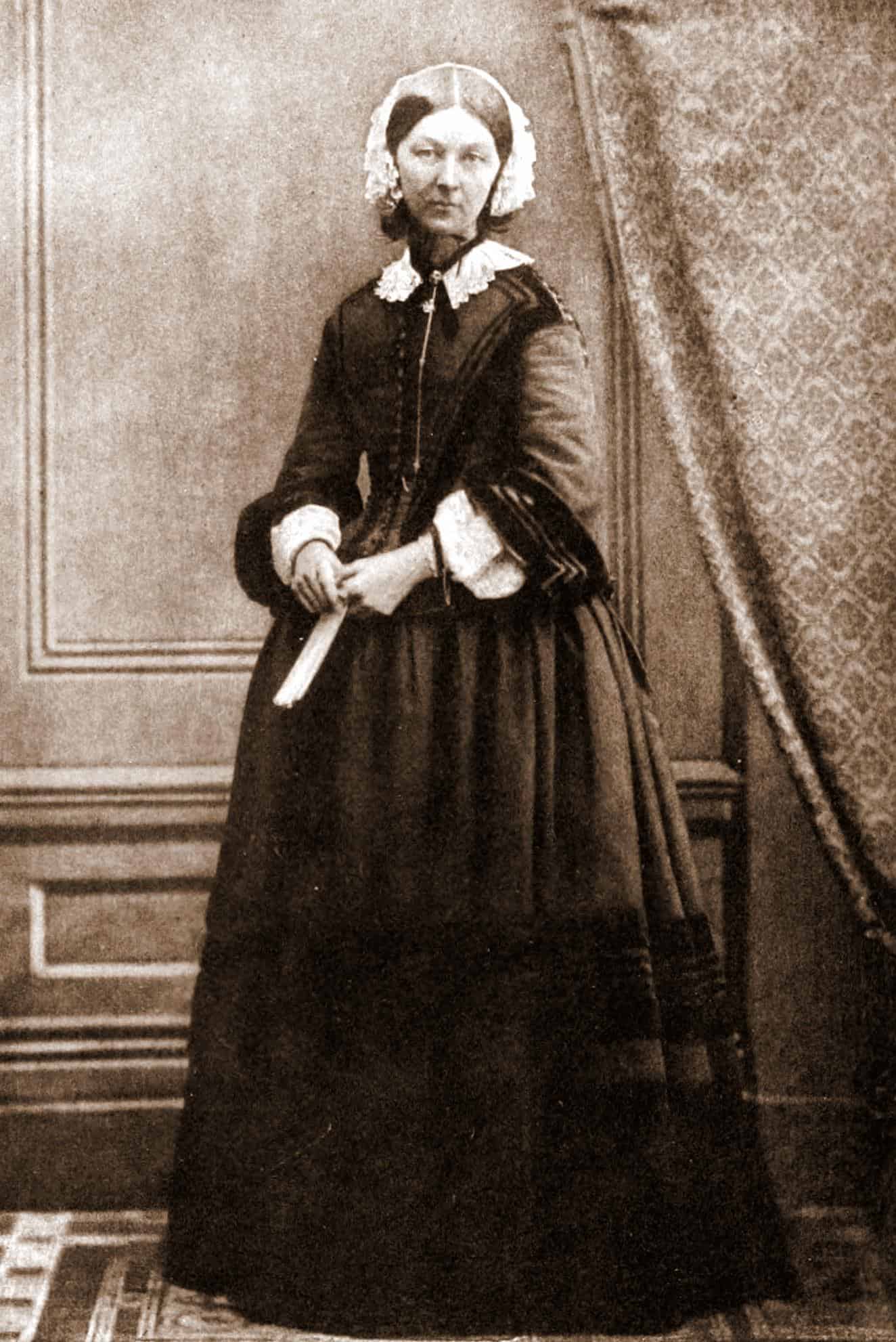
Was this page helpful?
Our commitment to delivering trustworthy and engaging content is at the heart of what we do. Each fact on our site is contributed by real users like you, bringing a wealth of diverse insights and information. To ensure the highest standards of accuracy and reliability, our dedicated editors meticulously review each submission. This process guarantees that the facts we share are not only fascinating but also credible. Trust in our commitment to quality and authenticity as you explore and learn with us.
